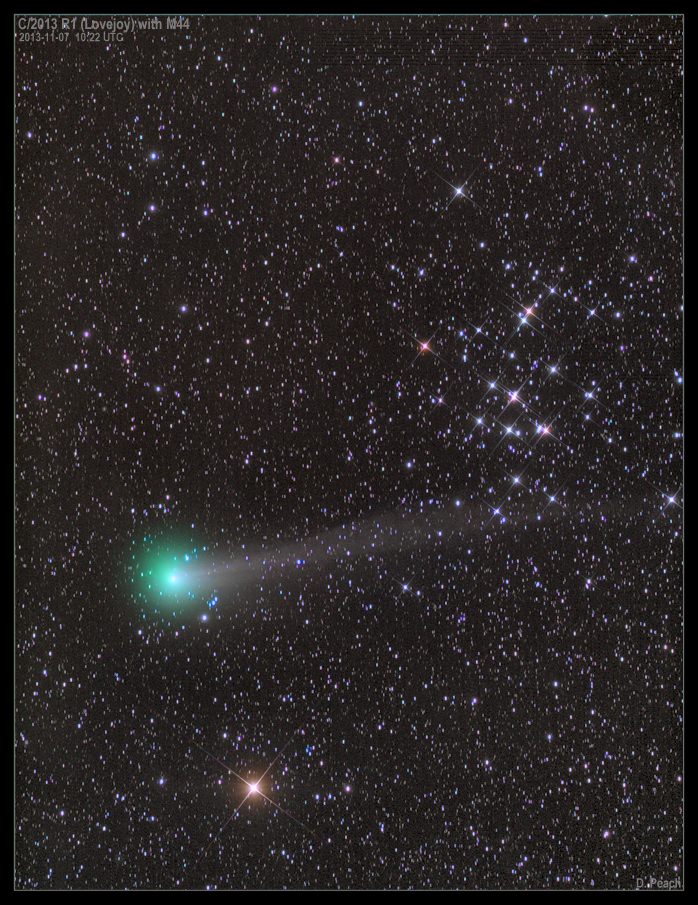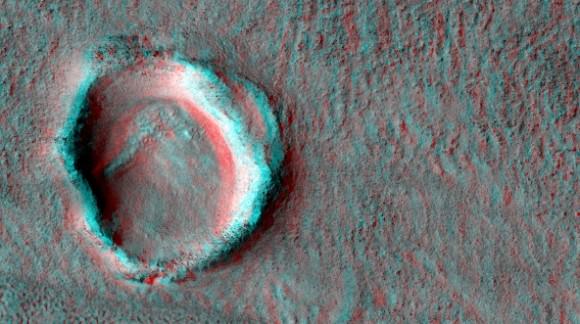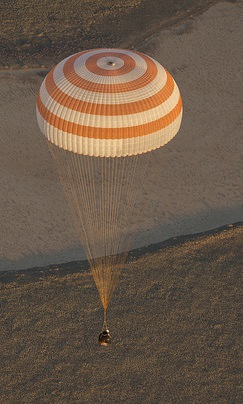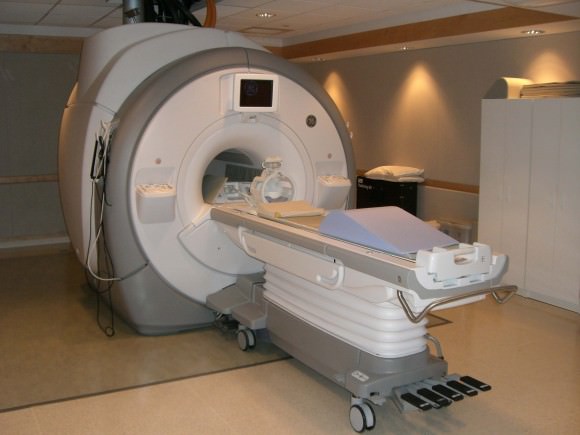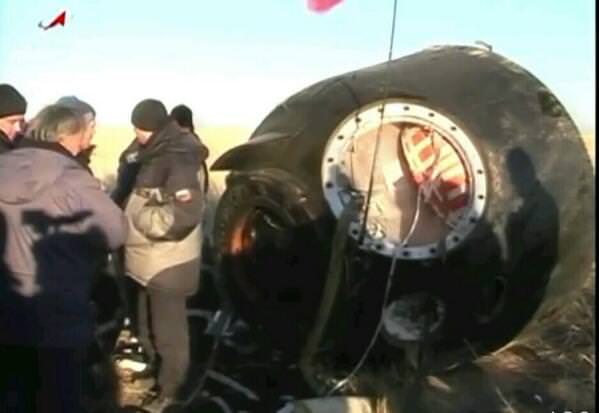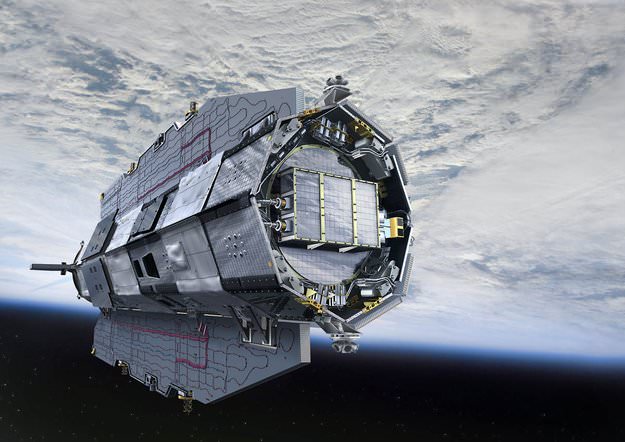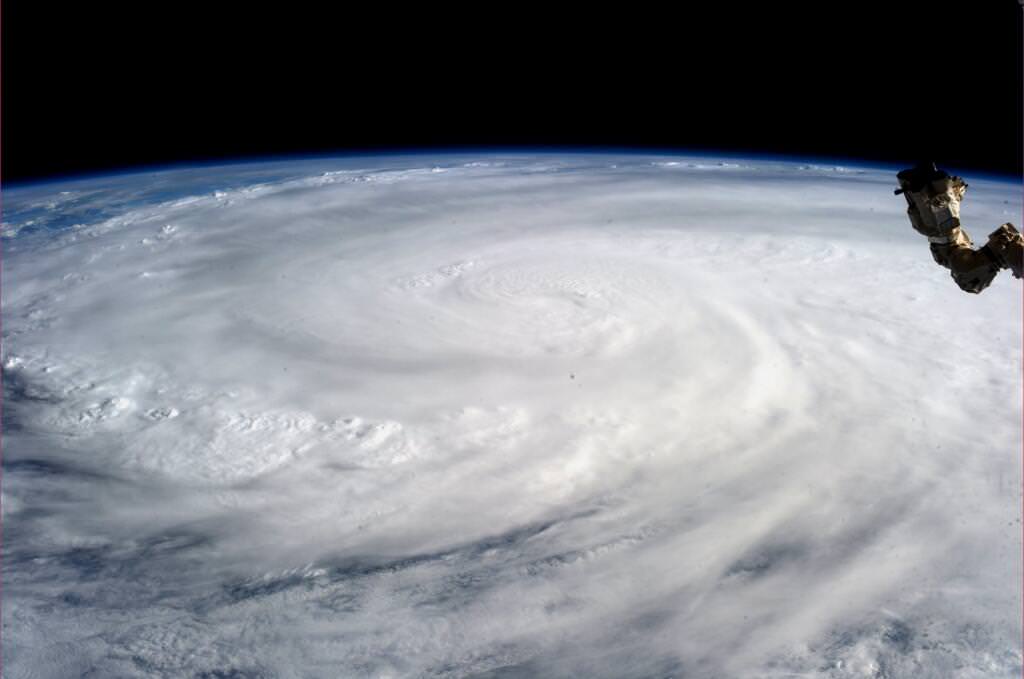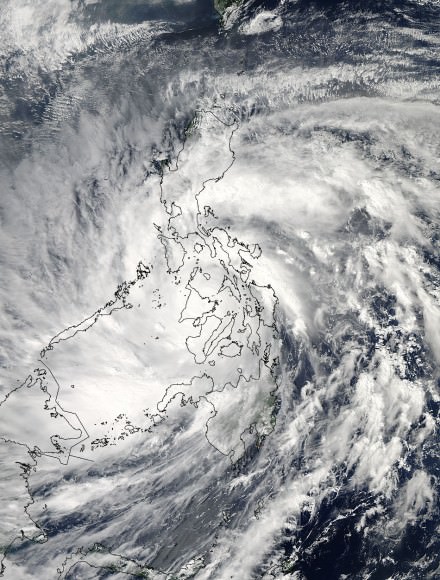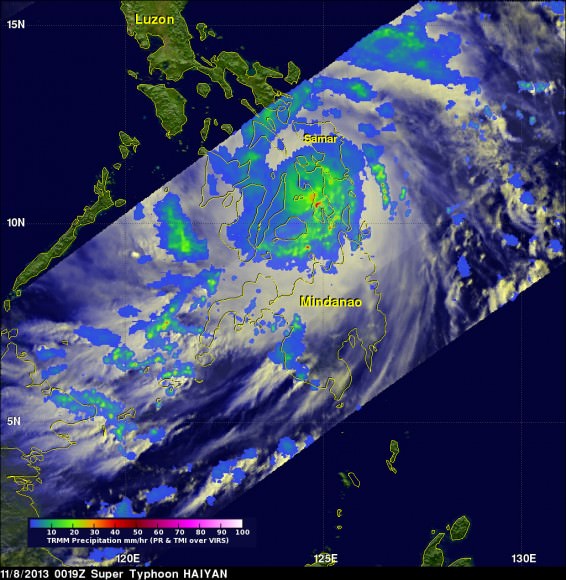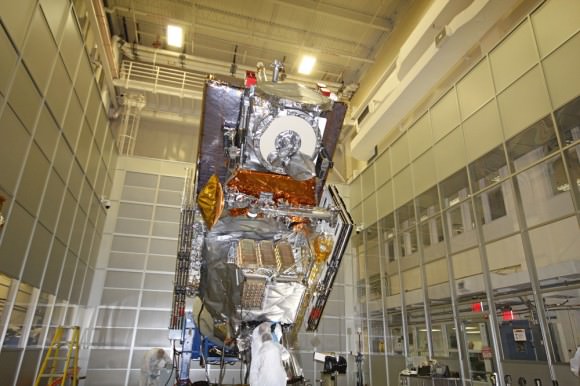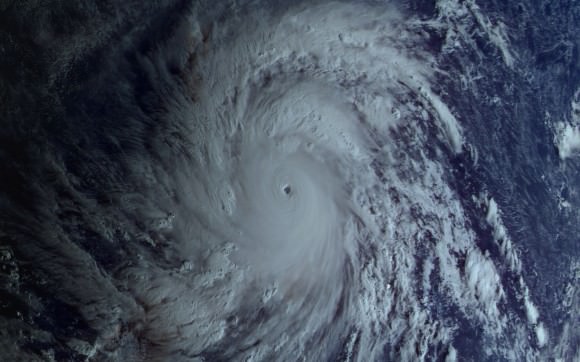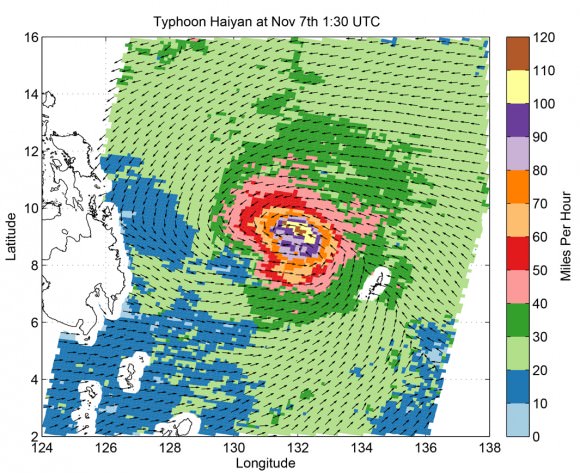Tired of comets yet? Right now, northern hemisphere observers have four (!) comets within range of binoculars in the dawn sky. Comet C/2012 S1 ISON, is, of course, expected to dazzle towards month’s end. Comet 2P/Encke is an “old standby,” with the shortest orbital period of any comet known at 3.3 years, and is making a favorable appearance this Fall. And comet C/2012 X1 LINEAR added to the morning display recently, reaching about +8th magnitude in an unexpected outburst…
But the brightest and best placed comet for morning viewing is currently Comet C/2013 R1 Lovejoy. Shining at +6th magnitude, R1 Lovejoy just passed into the constellation Leo after a photogenic pass near the Beehive Cluster (M44) in Cancer last week. We caught sight of R1 Lovejoy a few mornings ago, and it’s an easy binocular object, looking like a fuzzy unresolved globular cluster with barely the hint of a tail.
If the name sounds familiar, that’s because the comet was discovered by Australian observer Terry Lovejoy, the prolific discoverer of four comets, including the brilliant sungrazing Comet C/2011 W3 Lovejoy that survived its 140,000 kilometre perihelion passage above the surface of the Sun on December 16th and went on to dazzle southern hemisphere observers in late 2011 and early 2012.
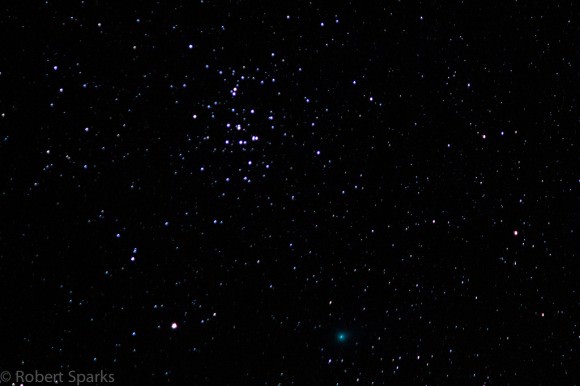
Terry discovered R1 Lovejoy on September 7th, 2013 while it was still at magnitude +14.4. The comet is expected to top out at +4th magnitude in late November as it passes 61.4 million kilometres from Earth on November 19th and heads for perihelion at 0.877 AUs from the Sun on December 25nd, 2013. Comet R1 Lovejoy is on a 64 degree orbit highly inclined to the ecliptic, and has a period roughly 7,000 years long. The last time R1 Lovejoy graced Earthly skies, our early ancestors still thought copper smelting was a pretty hip idea!
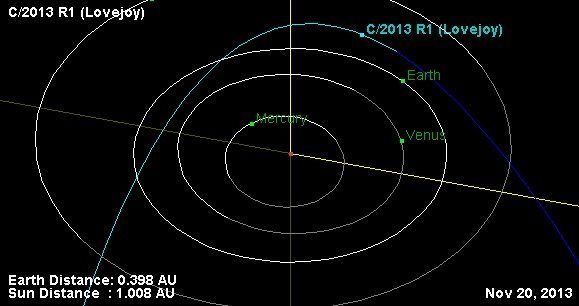
And unlike comets Encke and ISON that are plunging near the Sun, Comet R1 Lovejoy never gets closer than 19 degrees elongation from our nearest star in late December. It also reaches a maximum northern declination of 43 degrees on November 28th, the same day that ISON reaches perihelion. For mid-latitude northern hemisphere observers, R1 Lovejoy will remain well placed at 35 to 45 degrees above the northeastern horizon about an hour before sunrise through late November.
Here are some key dates to aid you in your quest to spy Comet R1 Lovejoy in late November:
November 11th: Passes near +4.5 Kappa Leonis.
November 14th: Passes from Leo into the constellation Leo Minor & passes near the +5.3 star 20 Leonis Minoris.
November 16th: Passes near the +5th magnitude stars 28, 30, and 34 Leonis Minoris.
November 18th: Passes into the constellation Ursa Major.
November 19th: Passes near the +4.8 magnitude star 55 Ursae Majoris & +5.3 magnitude star 57 Ursae Majoris.
November 19th: Closest to Earth, at 0.4 AUs distant.
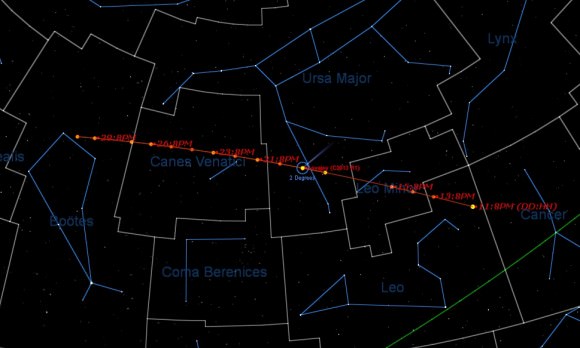
November 21st: Passes into the constellation Canes Venatici.
November 22nd: Passes near the +6th magnitude star 4 Canum Venaticorum & the +4.2 magnitude star Chara (Beta Canum Venaticorum).
November 24th: Passes near the Sunflower Galaxy (M63).
November 27th: Passes into the constellation Boötes.
December 1st: Passes near +3.5 magnitude star Nekkar (Beta Boötis).
December 4th: crosses into Corona Borealis.
Note that passes on the list above denote passages closer than one degree of Comet R1 Lovejoy near bright objects.
Perihelion for the comet is December 25th at 0.877 AU, and its closest approach to Earth is November 19th. On this date, it will also be moving at its maximum apparent speed as seen from Earth, covering about 3 degrees of the sky every 24 hours, or the angular span of the Full Moon every 4 hours.
United Kingdom observer Pete Lawrence imaged Comet R1 Lovejoy this past weekend from his backyard garden using a 4-inch apochromatic refractor and a Canon 40D DSLR:
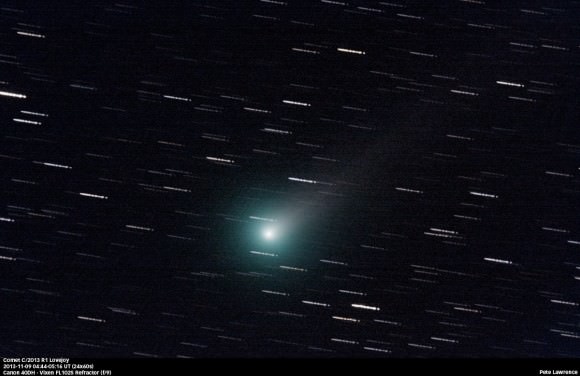
He also made his first confirmed binocular sighting of Comet ISON using a pair of 15×70 binocs, noting to Universe Today that “ISON’s head appears to be small and stellar compared to Lovejoy’s extended coma, which is obvious in binoculars, and also brighter!”
It’s worth noting that all four of these morning comets are on separate orbital paths, and only seem to be in the same general region of the sky as seen from our Earthly vantage point… and none of them are passing near the Earth!
This week is also a good time to hunt for comets in the pre-dawn sky for another reason: the Moon reaches Full this coming weekend on Sunday, November 17th. After this week, it will start to creep into the morning sky and interfere with deep sky observations for the next two weeks.
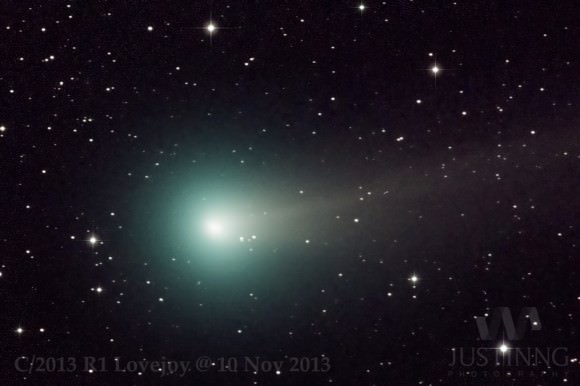
It’s also interesting to note that amateur observers discovered two more faint comets this past weekend. Though comets C/2013 V3 Nevski and C/2013 V2 Borisov aren’t slated to be anything spectacular, that brings the number of amateur discoveries to 13 for 2013. Are amateur comet hunters mounting a comeback?
In this age of automated surveys, the question is often raised as to whether amateurs can still discover comets. Keep in mind, Terry Lovejoy found Comet R1 Lovejoy with a medium-sized 8-inch Schmidt Cassegrain reflecting telescope… the age of amateur comet hunters seemes far from over in 2013!

